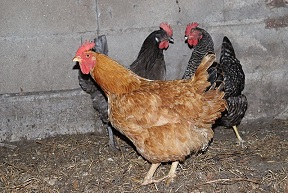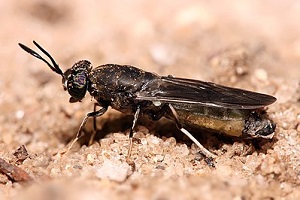Insects as food and feed have a low CO2 footprint, grow quickly, and have rapid reproduction cycle. So says Kees Aarts in the volume Our future proteins, A diversity of perspectives. They easily convert low-value materials into high-quality nutrients. Together with Tarique Arsiwalla, Aarts founded Protix. The company uses protein-rich insects, grown on fruit and vegetable waste streams, to create a wide variety of products, at the moment mainly feed for fish and chickens.

Protix: the future looks bright
This week, Protix was in the news. The American company Tyson Foods bought a minority share in the company. Together, they intend to build a factory in the United States, three to four times the 15,000 m2 large existing unit in Bergen op Zoom (the Netherlands). In this unit, Protix breeds 14,000 tons annually of larvae of the black soldier fly; mainly used for feeding 12.5 million chickens.
For many humans, eating insects is not common. Particularly Europeans have a distaste for insects. That’s why Protix concentrates on producing animal feed at the moment. Only as this can be produced in large quantities, and as the company makes a profit from it, it will attempt to venture into the market of humane food; so Aarts says to Dutch newspaper NRC. We don’t want to tell people what to eat or not, Aarts says. ‘Food is culturally and historically determined,’ he says, ‘and taste is something personal.’ Although consumers shouldn’t ‘carelessly’ treat the effect of their food choices.

A protein-dense food source
Nevertheless, we need insects on our plates, write Joop J.A. van Loon and Marcel Dicke in the volume Our future proteins. Insects have a natural function in nutrient recycling; therefore, they can be produced more sustainably than traditional animal protein sources. For insects can be fed with ‘waste’, but nevertheless they are a protein-dense food source; comparable to beef and tilapia. And insect proteins have the right composition for human needs.
Moreover, ‘production of insects as food is considerably more sustainable than the production of other animal proteins.’ This is ‘due to lower land and water use and lower emissions of greenhouse gases and ammonia per kilogram of protein produced’ (p.124). That eating insects requires much less land, is because of their efficiency to convert food into meat. About twelve times as efficient as the cow. And on top of that, we can rear insects on residual agricultural side streams, often called ‘waste’. And after harvesting the edible parts of the insects, we can use the remainder, called frass, as an excellent organic fertilizer. In sum, eating insects contributes a lot to a sustainable food system.
 Strict regulation
Strict regulation
But how would one convince Western eaters to put insects on their menus? Obviously, this will take time. The first step consists of ‘incorporating insect ingredients in common food products such as protein bars, pasta, burgers, nuggets, and spreads; ensuring excellent taste.’ Then, to provide ‘a tasting experience at events; giving information about sustainability and health effects; using role models such as TV or sport celebrities to promote products; and offering these products at competitive prices’ (p.127).
In the European Union, food regulation is strict, and renewing it is a time-consuming process. But lobbying by Protix and others was successful, finally. As a first step, in 2021/22 yellow and lesser mealworms and crickets have been approved as the first insect species for food use. For the pioneers, this was just the beginning. Aarts says that they plan insect-based food for humans. They recently launched ENOUGH, a range of insect-based snacks and culinary ingredients. There is a wealth of flavours to be discovered, he says.
Insect’s wellbeing
But what about the insects’ wellbeing? On its own site, Protix goes into this issue. They stress that they keep them at the right temperature, in the right conditions and make sure they get exactly what they need. At harvest, the animals are first cooled down, turning them sleepy, before they are processed.
In sum, insects form an important ingredient of our future food supply system. As Protix says, insects ‘have the amazing ability to turn low-grade food waste into valuable high-end proteins and fats.’ They consume leftovers and have a low ecological footprint. They are the perfect sustainable alternative to regular protein sources.
Interesting? Then also read:
How to cover future protein demand?
Waste is the most important biobased resource; but legal barriers abound
There is no such thing as an individual
